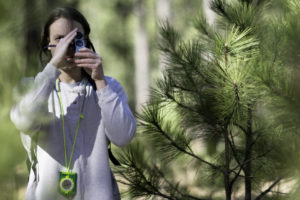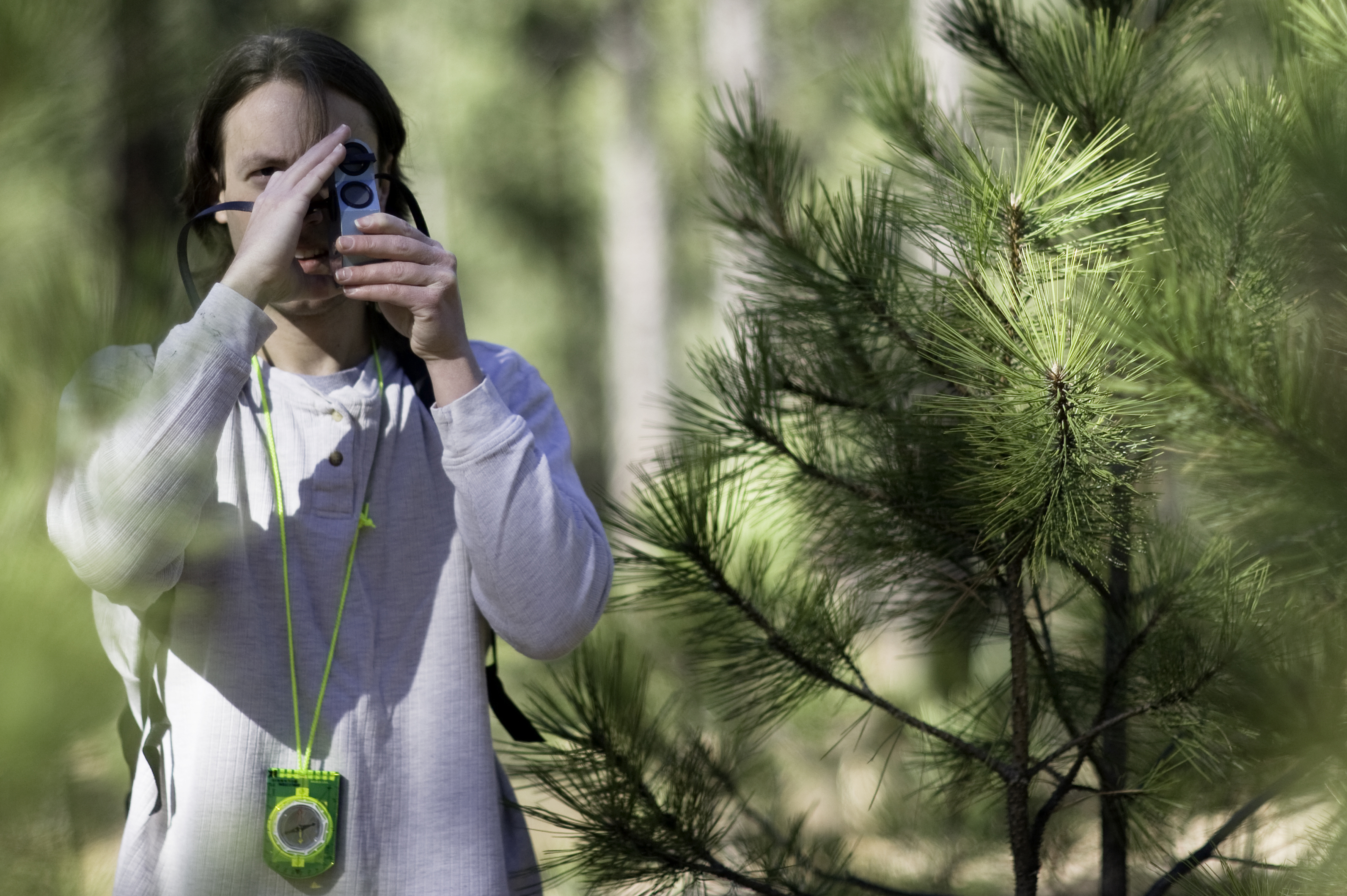January 13, 2020

A Highlands University forestry student takes forest management measurements during fieldwork.
Photo: Sean Weaver/Highlands University
Las Vegas, N.M.– The New Mexico Highlands University forestry program joins two other forestry organizations in a partnership to improve forest management in New Mexico and the Southwest, thanks to a five-year $5-million grant from the National Science Foundation.
The overall goal of the grant, which extends through 2024, is to improve forest health and resiliency before and after forest fires. Another goal is to increase Highlands University student involvement in professional research and work in the forestry discipline, building the pipeline for new forest managers and researchers.
Kent Reid, director of the New Mexico Forest and Watershed Restoration Institute, which is housed at Highlands, is the lead researcher for the National Science Foundation grant.
“A big reason we were awarded this exciting grant is the dedication and hard work of the faculty in the forestry program at Highlands and New Mexico State University’s forest research program,” Reid said. “The partnership supported in this grant provides novel, science-based solutions for private, tribal, state and federal forest managers faced with the twin threat of catastrophic fires due to overgrown forests and the inability of plant communities to naturally regenerate after a forest fire.”
The partnership for the NSF grant includes the Highlands University forestry program in the Natural Resources Management Department, the New Mexico Forest and Watershed Restoration Institute, and New Mexico State University’s John T. Harrington Forestry Research Center. Since 2017, the entities have collaborated in the Forest Restoration Triangle, or FORT.
The name for the National Science Foundation grant is Centers for Research Excellence in Science and Technology, or CREST.
“There are three ongoing research subprojects associated with the grant funding. One subproject addresses restoration-based approaches for forests at a larger scale, using a cycle of research, education and outreach. Another subproject addresses restoring overgrown ponderosa pine and mixed conifer forests. A third subproject addresses restoration after fires through planting trees,” Reid said.
Reid said the integrated team approach to forest health and resilience has the potential for national and global impact on forest restoration both before and after fires.
Craig Conley is a forestry professor at Highlands and a co-researcher for the NSF grant.
“The era of megafires globally makes this grant particularly relevant,” Conley said. “This grant gives the forestry program at Highlands a common research theme that engages faculty and students. It will transform the program over time, including putting us on the national map as a center of excellence in forest health and management.
“Our research subproject will focus on large landscape-scale forests like ones that are 5,000 to 10,000 acres. We’ll use landscape-scale fire models and develop a mobile computer modeling lab to take to communities. We’ll work with the communities to prepare wildfire protection plans,” Conley said.
Conley said Highlands undergraduate and graduate students will be involved in every component of the grant.
“During the academic year, students will have research projects funded within each of the three subprojects for the grant. Then, during the summer, we’ll hire student crews to do the forestry fieldwork. There will be an internship coordinator to manage student participation in the grant,” Conley said.
Blanca Cespedes is a Highlands forestry professor and another co-researcher for the grant. She developed the dendrochronology laboratory at Highlands to study fire history through tree rings.
“In the past century, forest fires in the Southwest have been suppressed, making ponderosa pine and mixed conifer forests overgrown,” Cespedes said. “Thanks to the dendrochronology lab, we can reconstruct fire histories in those kind of forests. To make forests healthier and more resilient to climate change and also avoid catastrophic fires, we need to use fire as a management tool in the Southwest.”
Cespedes said the NSF grant will open a new world of opportunities for Highlands University students.
“I’m excited the students will be working with me in the dendrochronology lab, giving them hands-on research in this field. This grant provides many future career opportunities for our students. I’m glad that with this grant, I can be a role model for women in fire ecology.”
Owen Burney of New Mexico State University is the superintendent for the John T. Harrington Forestry Research Center in Mora, New Mexico. He is the third co-researcher for the NSF grant.
Burney said the center in Mora includes a 110-acre research center and nursery greenhouse that produces approximately 300,000 seedlings per year for forest restoration, regeneration and research.
“The research we’re doing is to restore forest environments after fires,” Burney said. “We will assess a tree island planning strategy matched with site preparation and improved seedling characteristics for forest restoration efforts.”
Highlands University has the only forestry program in New Mexico and is accredited by the Society of American Foresters. Other Highlands forestry professors who will work on the NSF grant include Kyle Rose, Joshua Sloan, Julie Tsatsaros, and James Biggs. In addition, Joe Zebrowski, the Highlands GIS director, and Allan Barton from the New Mexico Forest and Watershed Restoration Institute will work on the grant.

